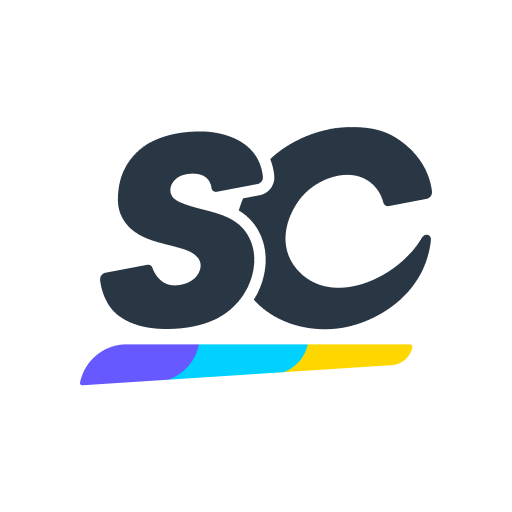Title Page
-
Audit #
-
Date
-
Area
-
Audit by
-
Directions
--------------------
1. For each statement, choose the appropriate score. [Use image below as reference]
2. Tap on 'Note' or 'Image' under each question to add a comment or evidence
4. For identified failed items, assign a corrective action by tapping on 'Action', provide a description, assign to a member, set priority and due date.
5. Complete all items in the checklist & review score per section to identify the overall rate score. -
Take or attach a photo of workspace
SORT
-
Only the required EQUIPMENT is present in the area. All obsolete, broken or unnecessary equipment not required for current projects are removed from the area or red tagged for removal
-
Only the required TOOLS are present in the area. Tools not required for current projects are removed from the area or red tagged for removal.
-
Only the required FURNITURE is present in the area. All obsolete, broken or unnecessary work-benches, shelves, chairs, lockers, etc. not required for current projects are removed from the area or red tagged for removal.
-
Only the required SPARE PARTS and MATERIALS are present in the area. Items not required for current projects are removed from the area or red tagged for removal.
-
All TRIPPING HAZARDS such as electrical wires and equipment cables are removed from all working, standing, and walking areas.
SET-IN-ORDER
-
EQUIPMENT/MACHINERY is clearly identified (numbered, named, color-coded, etc) and placed in a properly identified location. Critical maintenance points are clearly marked
-
TOOLS have a designated storage area that is within reach of the user/operator. The location is properly labeled and a system is in place to identify tools that are absent (shadowboard, etc.)
-
When applicable, FURNITURE is clearly identified (numbered, named, color-coded, etc.) and placed in a properly identified location.
-
Locations for CONTAINERS, WIP'S, BOXES, BINS, etc. are clearly defined via signs or marked/taped lines and properly labeled.
-
PAPERWORK is properly labeled and has a clearly identified location that is away from work surfaces
-
Work areas requiring PERSONAL PROTECTIVE EQUIPMENT (PPE) are clearly marked (floor tape, safety signs/labels, etc.)
-
STOP SWITCHES AND BREAKERS are highly visible and located for easy access in case of emergency
-
FIRE HOSES, FIRE EXTINGUISHERS, and other emergency equipment are prominently displayed and are unobstructed.
-
FLOOR/AISLES are clearly marked; forklift lanes, exits, dangerous areas, paths of egress, walkways, aisles, etc. are all marked with visible lines (floor tape/floor paint).
-
Working conditions are ERGONOMICALLY FRIENDLY - Tools and other times needed for daily work are stored at appropriate heights, anti-fatigue mats are in place where applicable, related safety signage is displayed clearly, etc.
-
The workspace layout accommodates EASY UNOBSTRUCTED EXIT in case of emergency. The emergency exit route is posted in conspicious location for all to see
SHINE
-
PAPERWORK is properly labeled and has a clearly identified locations is away from work surfaces
-
WORK AREAS (Machines, workbenches, dies, and other equipment including electrical boxes) are kept clean and painted.
-
WALLS, PARTITIONS, RAILS, ETC. are kept clean and painted.
-
FLOORS are free from dirt, debris, oil, parts, hardware, empty boxes, etc. and all drains (if applicable) are clear of debris and clogs
-
PAPERWORK is not torn and is kept clean and protected from dirt and other contaminants
-
CONTAINERS, BOXES, BINS, ETX. are clean and not cracked, torn, or otherwise damaged. When stored, they are neatly stacked in their correct location.
-
All PERSONAL PROTECTIVE EQUIPMENT (PPE) is maintained in sanitary and reliable condition and is properly stored in an easily accessible and labeled location when not in use.
-
All CLEANING EQUIPMENT is neatly stored and is readily available when needed.
-
All EQUIPMENT SAFETY - related warnings, signs, labels, floor lines, etc. are all clean, easy to read, not torn or damaged, and provide adequate protection
-
There is posted SCHEDULE showing times, frequency, and responsibilities to clean areas of the workplace such as windows, corners, walls, doors, tops of cabinets, etc.
STANDARDIZE
-
TOOLS, EQUIPMENT, PAPERWORK, FURNITURE, ETC is stored neatly in designated areas and are returned to their proper homes immediately after use.
-
Equipment MAINTENANCE RECORDS are visible and clearly state when maintenance last occured.
-
PRODUCT WASTE (shavings, containers, liquids, wrappers, etc.) is consistently and regularly cleaned up and removed from workspace.
-
PREVENTATIVE MEASURES have been implemented to ensure the workplace meets 5S guidelines (e.g., systems that do not allow waste to accumulate such as containers to collect product debris from machines)
-
The WORK ENVIRONMENT satisfies the requirements of the work being performed- Lighting brightness and color, temperature, air flow and quality etc.
-
The RESULTS OF THE PREVIOUS AUDIT are posted and clearly visible for the entire team
-
AREAS FOR IMPROVEMENT identified during the previous audit have been addressed and completed.
SUSTAIN
-
A member of MANAGEMENT has participated in a 5S activity such as an audit or other activity within the past 3 audit periods
-
RECOGNITION is given to teams who get involved in 5S activities.
-
TIME AND RESOURCES are allocated to 5S activities (e.g., designated daily/weekly clean-up time, 5S Team Leader).
-
All operators, team leaders, supervisors, etc. are assigned 5S ACTIVITIES to be completed at least once a week.
-
The team took the INITIATIVE to make improvements to the workplace that were NOT identified during the last audit.
COMPLETION
-
Overall observation & recommendations
-
Name & Signature of Area Supervisor/ or any Assigned Employee









